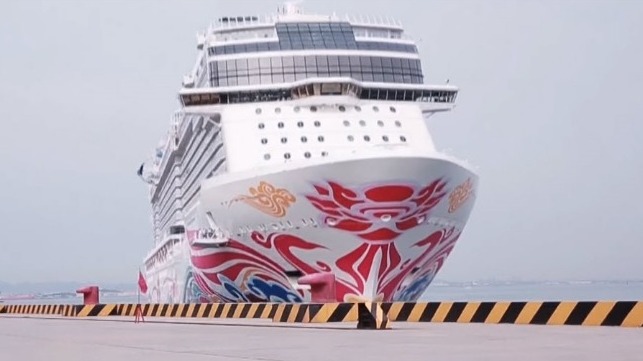U.S. Travel Industry Thriving, Will China Follow Suit?

2019 marks a decade since the U.S. travel industry emerged from the depths of economic recession. Over the past 10 years, the surge in recovery has coincided with an economic turning point in emerging markets, fueling a historic burst in demand for travel. It remains to be seen, though, whether China, second only to the U.S. in the number of cruisers, will follow the same cruising trends.
From 2009 to 2017, U.S. cruise passenger numbers grew from 10.4 million to 12.4 million and revenue growth from $12 billion to $18 billion, according to Deloitte in their 2019 US Travel and Hospitality Industry Outlook. The U.S. represents 55 percent of all global cruise passengers.
While strong, Deloitte says that the growth trajectory for the cruise industry falls just short of hotel industry growth, as it is a more specialized experience. Consumer perceptions around spending extended periods of time at sea tend to be polarized. Travelers are often loyal or avoid the experience. The dichotomy underpins recent strategy within the segment with brands often flipping between new customer acquisition and extracting greater value from existing cruisers.
“People who go on cruises have a very high instance of repeating that experience and going on more cruises,” says Adam Weissenberg, Deloitte’s Global Transportation, Hospitality & Services Leader. “It's a very loyal market. The cruise industry loves that. They love to attract people, because once they get you through the door, a lot of people go again with their families every year or with friends.
“These people are loyal, they understand cruising, you know what they're gonna spend on board, you can look at other ways to get them to do that, and it's almost cheaper to get that repeat customer to come back than it is to go out and advertise and do all the things you have to do to find new ones.”
However, from a long-term perspective, new customer acquisition seems the more promising strategy, particularly considering the untapped global market. China is of particular interest. Yet cruise lines continue to pull back as travel demand in the region cools, says Weissenberg. The strategy so far with some lines has been to put ships there and assume the Chinese will start cruising. “It hasn't necessarily happened, and I think there's also been a lot of chartered cruises which in the long-run probably isn't the way to do it either. You want to be able to have more daily, normal, vacation cruisers, like we have in other markets. I think the other thing is that high-end Chinese travelers don't necessarily want to cruise in China.”
This has caused a rethink on strategy even though the industry is confident of growth there eventually. “It's already the second-largest cruise market in the world. It's gonna continue to grow. It's just inevitable.”
What shape that growth will take is still uncertain. “The U.S. market has moved towards massive ships that offer more and more high end amenities: zip-lines, race tracks, multiple restaurants, high end restaurants, ice skating rinks, and that seems to be one of the ways of attracting more and more people to cruise or to get people to repeat. The size of these ships is incredible: 4000, 5000 passengers.
“If you think about the size of China's population, is that ultimately the way the market will go - bigger and bigger cruise ships to attract more and more people? They clearly have the population, so I think it's a trend that is happening. I also think there's a high end travel market that's starting to grow in China in general. When Chinese travel, they love to shop. They're the number one in terms of their spend on retail, so I think we'll see more luxury cruise ships enter the market to really appeal to that high end. They'll travel to more shopping destinations such as Hong Kong, Macau and further south in Asia.”
As the global traveler pool grows, so do the number of attractive destinations competing for their dollars. Globally, popular destinations like New York are competing with newer “rising stars” like Portugal and Vietnam. Some of these destinations are growing visitations by 20 to 30 percent annually.
While inbound tourism has always been strong for the U.S. travel industry, it is now feeling the pressure. International arrivals into the country increased by 0.7 percent in 2017, but its global share of long-haul travel is dropping, down to 12.2 percent in 2017 from 13.8 in 2015.
Deloitte says that infrastructure investment is important. “Smooth-running airports and even well-paved roads and waste management are integral to keeping the United States competitive as a global destination. But recent travel growth, combined with other factors like urbanization, has U.S. travel infrastructure bursting at the seams.”
According to the American Society of Civil Engineers, the U.S. needs $4.5 trillion in infrastructure investment by 2025 before the problem potentially impacts GDP and job growth. Key travel infrastructure, including airports, parks and recreation, rail, ports, roads and transit require some of the biggest improvements, says Deloitte.
Still, says Weissenberg, the growth of the travel industry has been outpacing the world economic growth. How long this can continue, particularly in the U.S., remains to be seen, but Asian growth, in particular, retains strong growth potential.
